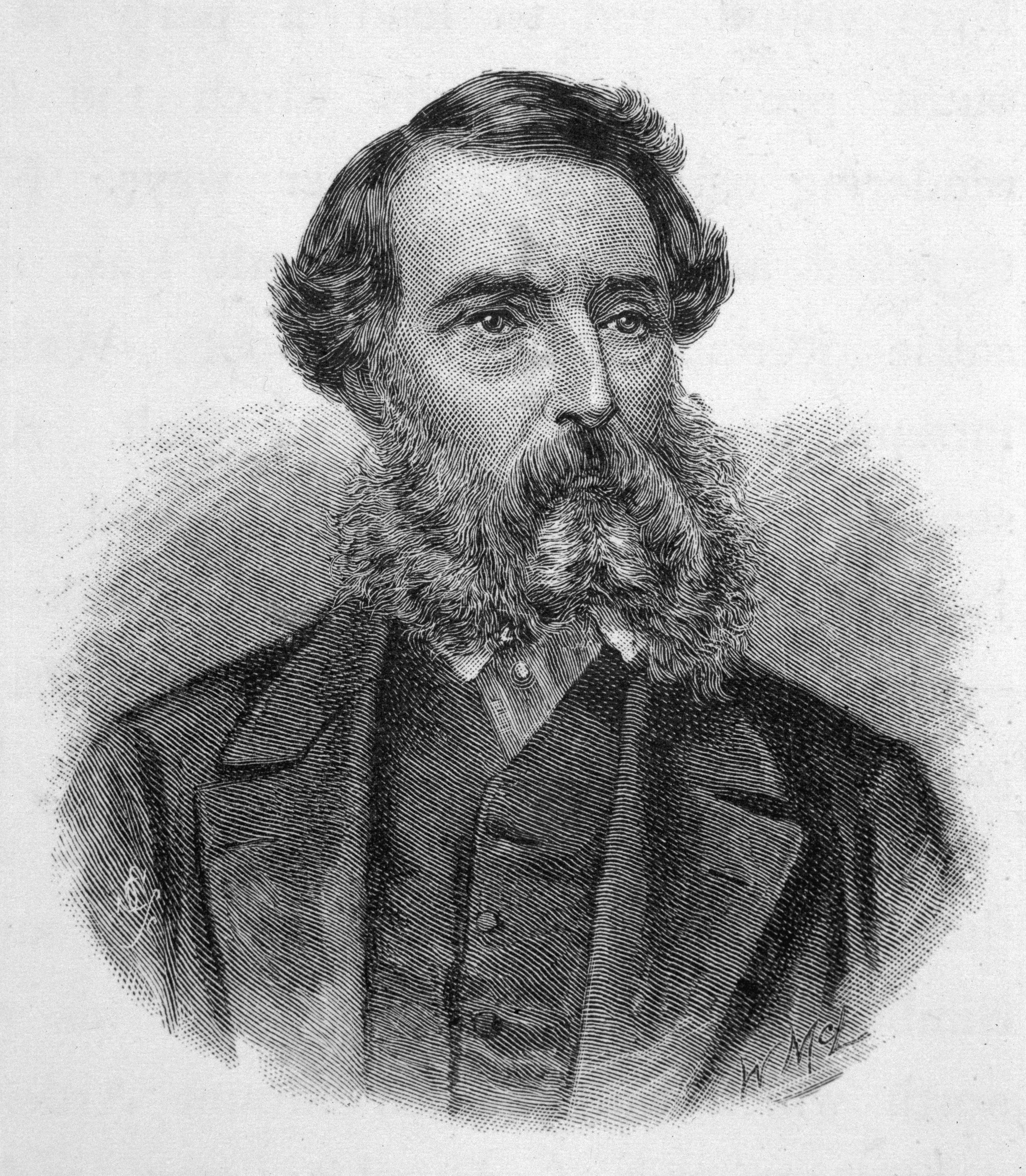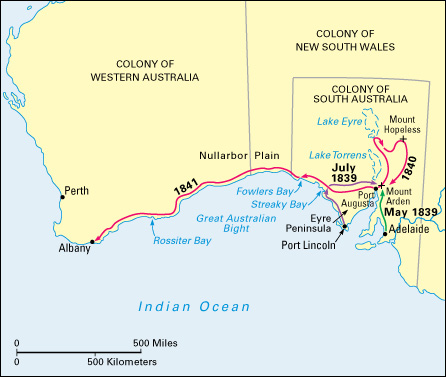Eyre, Edward John (1815-1901), became famous for his exploration of Australia. Between 1836 and 1840, he conducted many small expeditions in New South Wales, South Australia, and Western Australia. He also pioneered a stock route (cattle or sheep pass) in Charles Sturt‘s trail from Sydney along the Murray River to Adelaide.

On June 18, 1840, Eyre took charge of an expedition to open up a route between South Australia and Western Australia. Eyre made his way westward across what is now Eyre Peninsula and along the coast. The harsh conditions of the countryside and the lack of water forced him to divide his party. The South Australian government eventually sent a ship with fresh supplies to Fowlers Bay. After a short rest, Eyre and a man named Baxter continued the journey, accompanied by three Aboriginal men. The conditions got worse. Later, two of the Aboriginal men killed Baxter and left, taking as much food as they could. Eyre and Wylie, the other Aboriginal man, continued the journey. In June 1841, they came upon a French whaling ship anchored off the coast and were able to rest. Then they continued their journey and, on July 7, 1841, they reached Albany.

Eyre was born in Bedfordshire, England, on Aug. 5, 1815. He immigrated to Sydney at the age of 18 but returned to the United Kingdom in 1853. He later became lieutenant governor of St. Vincent and Antigua, two islands in the eastern Caribbean. He was appointed governor of Jamaica in 1864 and created a controversy in the United Kingdom by the severe manner in which he suppressed the Morant Bay Rebellion, a peasant revolt. Eyre died on Nov. 30, 1901.
